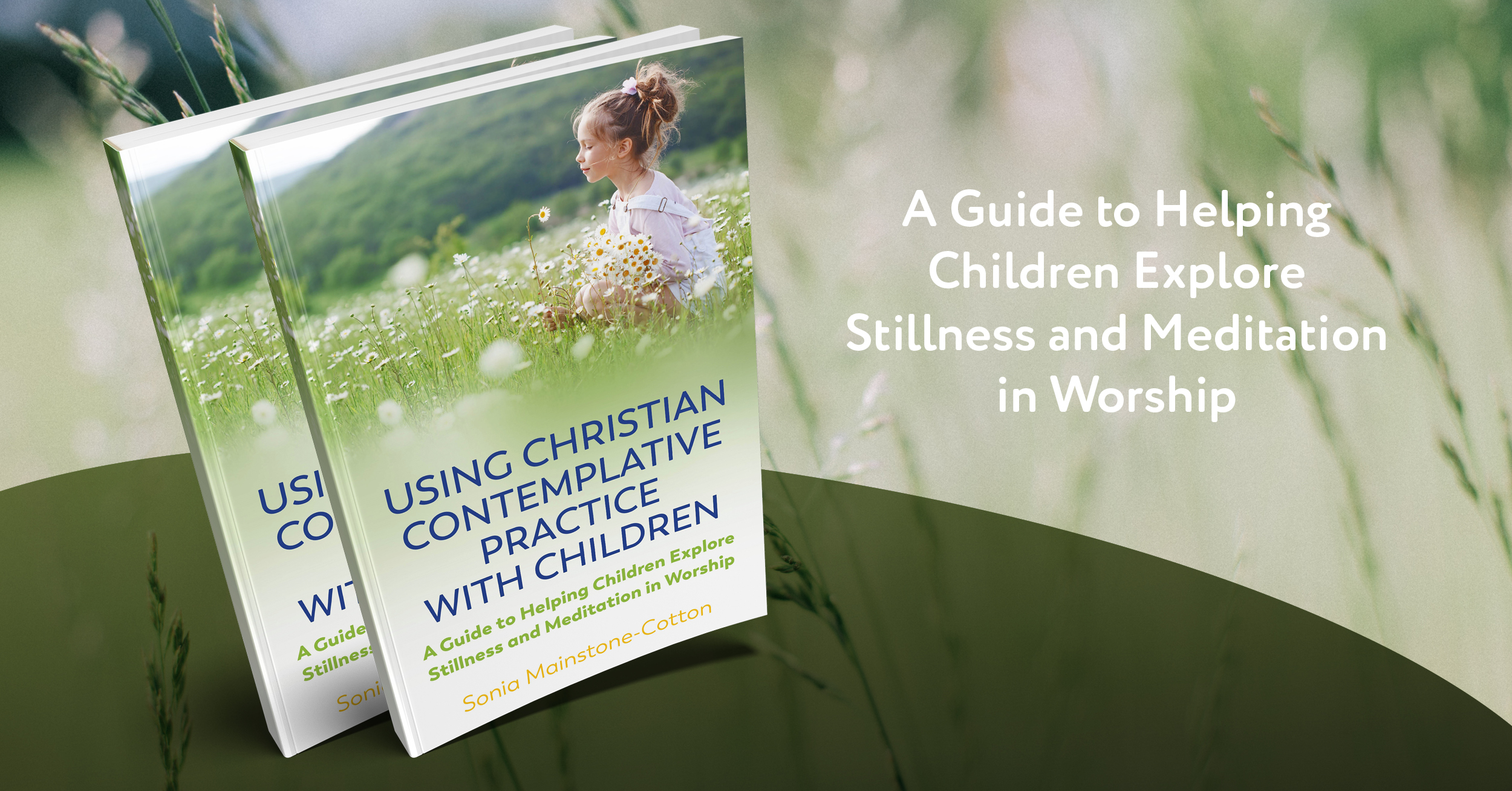
We are currently in a time when there is a great emphasis on children’s well-being and mental health. Current statistics are that 1 in 10 children in the UK aged 5-16 have a clinical diagnosable mental health problem[1]. There are many discussions and thoughts about why so many children and young people are suffering with poor mental health. One argument that many seem to agree with is that our children’s lives are increasingly busy, noisy and rushed.
Meditation, stopping and stillness is increasingly being seen as a positive tool to assist our mental health. Within the Christian tradition, we have had a long history of using meditative prayer going back to the desert fathers and mothers. Many scholars such as Richard Rohr, Martin Laird, and Ian Adams are reminding us of this long tradition and encouraging us to reconnect with it. This is often looked at with adults, but I am interested in how we can teach children from a young age this precious tool. Many schools are now using mindfulness and meditation; however, this is something we can also embed into our family life and church life. The ideas I am sharing here are ones I have used in my own family and in schools and churches.
Bubble prayers
These have become a firm favourite of mine. Over the last 20 years I have been involved in different ways of exploring church, and during that time bubble prayers have always been part of our services; we have used them at weddings, funerals, christenings and regular services. We have also used them in the family home as part of prayer life.
You will need to:
- Supply pots of bubbles – small pots for party bags are excellent and cheap to buy.
- Hand out a pot of bubbles to every person in the group, if you don’t have enough then encourage them to share.
- Explain that in the Orthodox church they use incense to take their prayers to God.
- We are using bubbles to take our prayers to God.
- Encourage everyone to pray silently and then blow their prayers to God.
- There is something very beautiful in seeing bubbles floating in the sky, knowing these symbolise many, many prayers.
Over the last year I have been involved in a Forest Church, where sometimes we use giant bubbles. We all have a small pot first and then I explain we have some giant bubble mix for the really big prayers we have, and people come up one at a time to make the giant prayer bubble. You can buy a giant bubble wand cheaply or make you own – look on Pinterest [2] for instructions.
Here’s the recipe I use for making my own giant bubble mixture (this can also be used as a refill in your bubble pots):
- 6 cups of water
- 1 cup of strong washing up liquid e.g. Fairy etc, not an eco one as they don’t work so well,
- 1 tablespoon of liquid glycerin (you can buy from the baking part of a supermarket)
- Gently mix together, trying not to make it very bubbly.
- Dip your giant bubble wand in the mixture and gently move your hands apart and move slowly to make the giant bubble (this may take some practice.)
Bare foot walking
Spending time outside is known to be hugely beneficial to our mental health, and it is also a place where many find it easier to engage in contemplative practices. The act of barefoot walking slows you down, it almost forces you to become very present and mindful. Barefoot walking also really connects you to the ground and the earth and in turn to God, who created it. I find Barefoot walking is a lovely connecting and contemplative exercise. It works particularly well when children are agitated or stressed, there is something about feeling the grass or sand under their feet that often calms children, and it can be a good way to introduce contemplative practice to them. Having said that, some children may have sensory processing issues and find this a distressing idea, if this is the situation, suggest they walk but with their socks on.
Before you do this, you will need to risk assess the outdoor space you are going to use, making sure there is no broken glass etc. You could do this exercise on a patch of grass, a beach, a wooded area, a muddy area, or even a carpark. All spaces will have different feels and textures. You may want bowls of water and towels at the end if people need them.
You will need to:
- Bring everyone outside.
- Explain you are going to do some barefoot walking, encourage everyone to take off their shoes and socks.
- Tell everyone how long you are doing this for. If this is the first time, keep it to 5 minutes.
- Explain that this is a time where you are invited to walk and notice, and pray, if possible without words. Your walk will be your prayer. You could start by saying in your head ‘Lord hear my prayer.’
- As you walk notice how it feels. Notice what you see and smell and hear, notice how this makes you feel.
- After 5 minutes bring it to an end.
- Discuss how the children found this, asking what they noticed and how they felt.
Both of these exercise are very simple ways to introduce some contemplative practice to children, bringing some calm and quietness into their lives.
For more ideas like these, take a look at Sonia Mainstone-Cotton’s new book – Using Contemplative Practice with Children, out now.
[1] https://www.mentalhealth.org.uk/statistics/mental-health-statistics-children-and-young-people